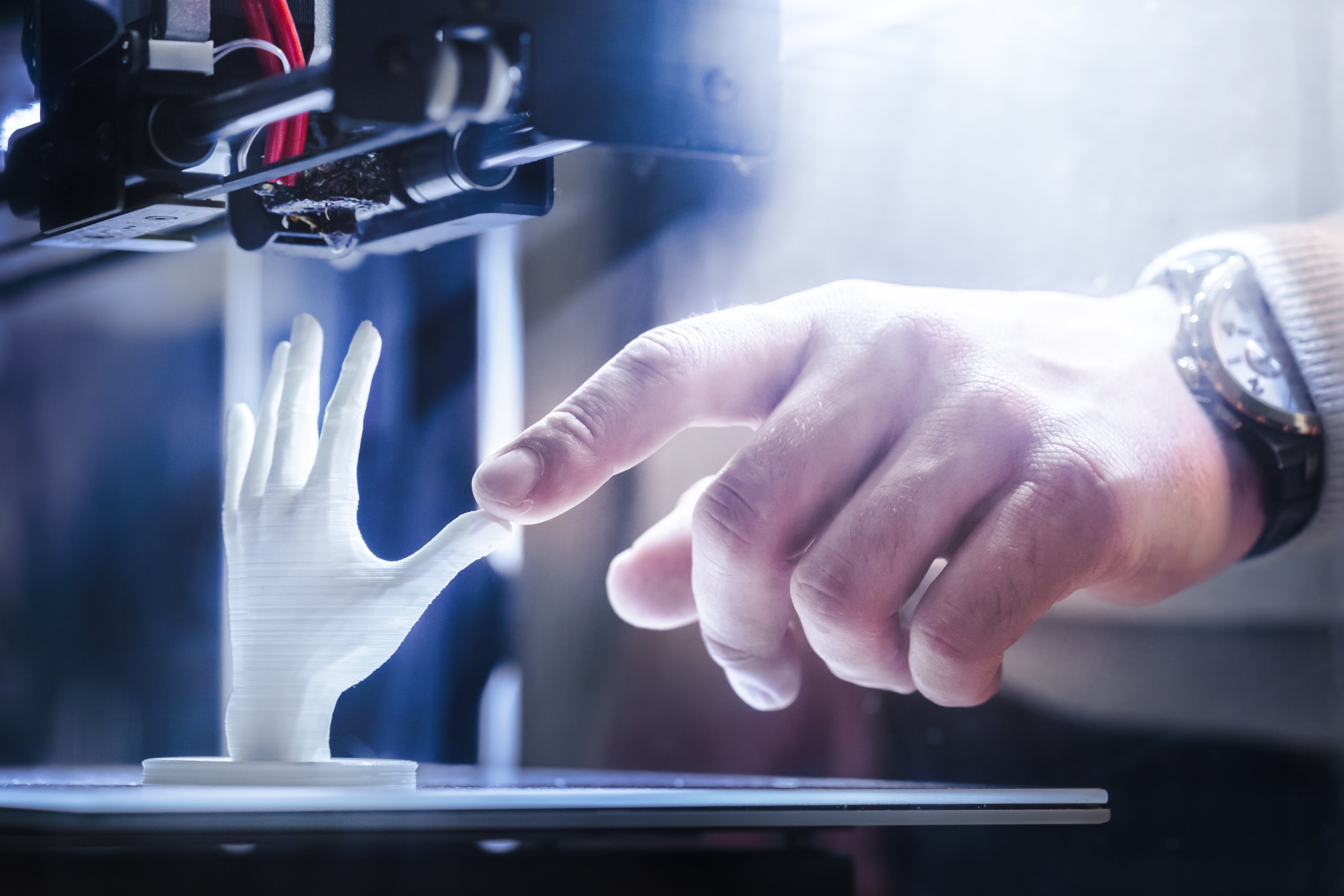
According to this report from Deloitte, the global 3D printing industry is expected to reach $5.2 billion in 2020 and the largest opportunities for corporations in near future will be in home improvement and the life sciences sectors. Yet, today there are still several hurdles in the additive manufacturing process that need to be overcome for widespread adoption in the industry.
For example, additive manufacturing involves numerous and complex variables to be monitored and controlled in the process to achieve an acceptable level of accuracy in printing. Trial and error methods for finding the correct lattice positions or design of appropriate support structures are not a sustainable or fast solution.
Machine learning is currently being used to solve this problem by using generative design and testing in the pre-fabrication stage, with the aim of improving printing efficiency and cost savings. Artificial intelligence is currently finding applications in 3D printing and additive manufacturing for creating intelligent service-oriented production processes for the industry.
In this article, we explore the current applications of artificial intelligence in the additive manufacturing and 3D printing industry. Through the course of research we noticed that the AI applications seemed to congeal around the following broad segments today and in the near term (next 2 years):
Current:
- Improving efficiency in the prefabrication stage
- Defect detection
Near-term:
- Real-time build control
- Predictive maintenance
Improving Efficiency in the Prefabrication Stage
Agile Metal Technology Software by Sculpteo
Sculpteo is a french company which specializes provides online 3D printing services for prototyping and manufacturing. The company launched a new software suite called Agile Metal Technology at the CES 2017 and claims that the ‘Business Case’ tool in the software suite (which contains 6 tools of which only 1 is currently available at the time of writing) uses machine learning to evaluate and optimize CAD files for metal 3D printing.
According to Sculpteo, the Business Case tool takes inputs from users who want to design and manufacture a particular part in the form of CAD files and desired output parameters, and uses machine learning to evaluate if additive manufacturing would be the appropriate process for producing the part. The tool can also potentially assist in optimizing lattices in the CAD files and evaluate the most efficient printing paths.
Here is a short video from Sculpteo showcasing some of the features of the tool:
Interestingly, the knowledge barrier threshold for 3D printing can be potentially minimized through smart 3D printing software which use machine learning and AI assistants (like Sculpeo’s offering) intending to make adoption in the industry easier although, the software is new to the market and its impacts aren’t clear at this time.”
Netfabb 2018 by Autodesk
According to Autodesk: “Generative design mimics nature’s evolutionary approach to design. Designers or engineers input design goals into generative design software, along with parameters such as materials, manufacturing methods, and cost constraints. Then, using cloud computing, the software explores all the possible permutations of a solution, quickly generating design alternatives. It tests and learns from each iteration what works and what doesn’t.”
Autodesk recently announced the launch of its first generative design product which after development as Project Dreamcatcher, has been named Autodesk generative design tool. The company launched the product as a part of their Netfabb 2018 software suite. Autodesk’s Netfabb additive manufacturing software claims to use machine learning to generate and evaluate digital models for industrial 3D printing production.
Here is a short 1:40 minute video from Autodesk explaining the features of their generative design tool:
Autodesk claims to have successfully completed projects in generative design with customers like Airbus and Under Armour.
Defect Detection
Computer Vision for Defect Detection by GE
General Electric’s GE labs in upstate New York claims to have previously developed computer vision technology that can find microscopic cracks in machine parts and other microscopic aberrations. The Additive Research Lab at GE Global Research in Niskayuna, New York claims to be using artificial intelligence and machine learning, to enable 3D printer to perform inspection of parts after they are completely built in order to improve cost and time savings in the manufacturing industry.
The team from the additive research lab uses high-resolution cameras to film the printing process for each layer to record streaks, pits, divots and other patterns in the printing powder which are invisible to the naked eye. GE claims that a proprietary machine learning platform then matches recorded powder patterns to defects revealed by CT scanners. In essence, the ML platform is trained through the use of high-resolution camera footage and CT scan data and can eventually ‘learn’ to predict problems and detect defects in the printing process.
Here is a short video answer from a spokesperson from GE additive about defect detection in during the building process:
Real-Time Control
GE Additive
Although at the time of writing GE additive did not have a prototype printer which could achieve real time printing control, this seems to be the next overlapping area of research for them. Joseph Vinciquerra, Additive Manufacturing Leader at GE Global Research says (in the video below) that it is possible to take defect detection using computer vision and dynamically control 3D printers to compensate for the defects. The longer term goal for the team at GE Additive is the idea that the 3D printer can create compensation strategies based on what the computer vision data predicts.
GE claims that the machine learning based in-process detection quality issues can help in limiting waste of time and materials. GE Additive scientists explain their zero waste approach additive manufacturing in this video from GE Reports:
Predictive Maintenance
Machine Learning and 3d Printing for Spare Part Manufacturing Industry
According to a 2017 report from Price Waterhouse Cooper, over the next five years, a significant proportion of today’s spare parts providers agree that 3D printing will play a dominant role in the spare parts business. The report also claims that this opportunity seems to stem from the adoption of machine learning techniques in predictive maintenance and in the spare part 3D printing process.
For example, in a discrete manufacturing setting, predictive maintenance models could use ML to accurately predict the remaining lifetime of specifics part or pieces of equipment. In an additional layer, machine learning could also be used to proactively identify time for part replacements by using predetermined replacement schedule data.
According to an article in engineering.com, by Stefan Krauss is the Global General Manager, Discrete Manufacturing Industries at SAP:
“Manufacturers who can take advantage of ML to predict when equipment and parts will fail, then subsequently employ 3D printing to proactively print and ship replacement parts ahead of these failures, will enjoy significantly reduced spare parts costs and delivery times, and higher customer satisfaction.”
Concluding Thoughts – Future Potential
The biggest use-cases for artificial intelligence in additive manufacturing today seem to lie in enhancing design and improving the efficiency of the printing processes. According to this Survey on artificial intelligence for additive manufacturing some of the key challenges that AI will help overcome in the near future for additive manufacturing will revolve around:
- Improving prefabrication printability checks
- Reducing the complexity involved in the process
- Reducing the talent threshold for manufacturing industries
- Cybersecurity
Header image credit: Adobe Stock






